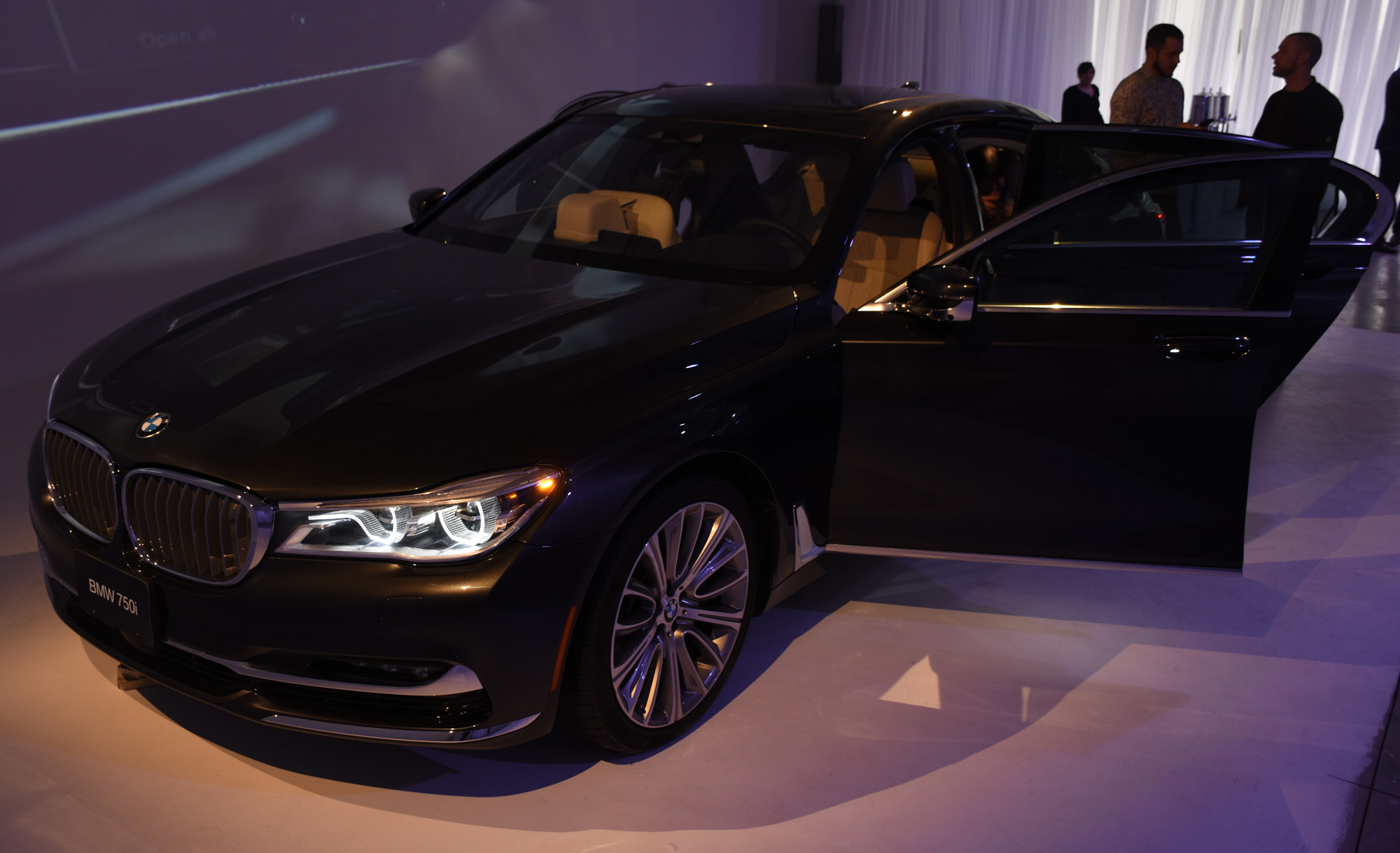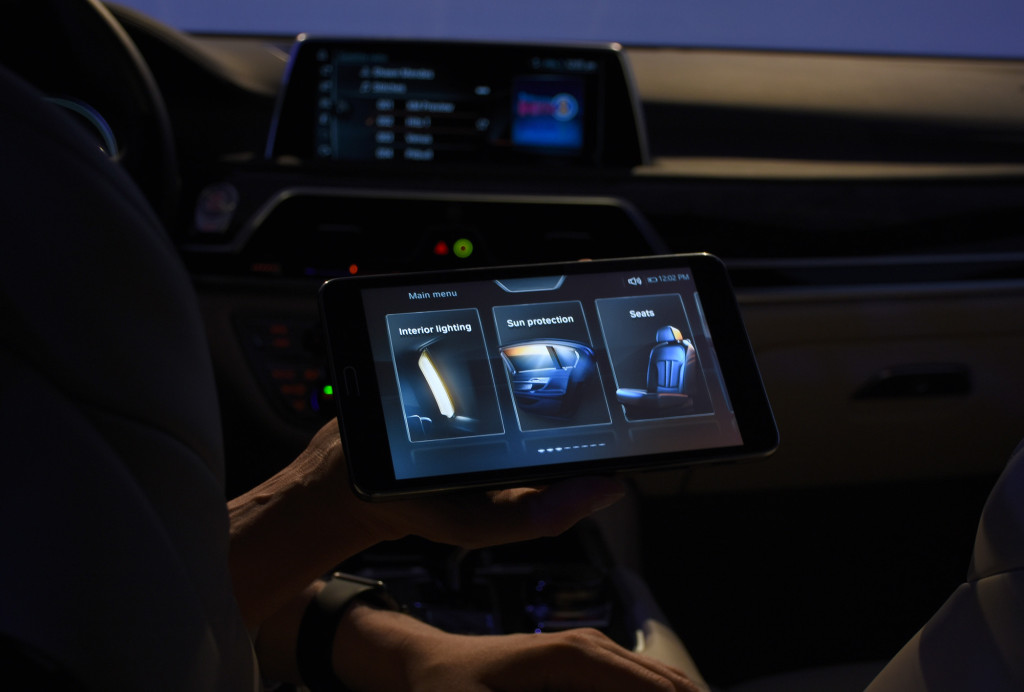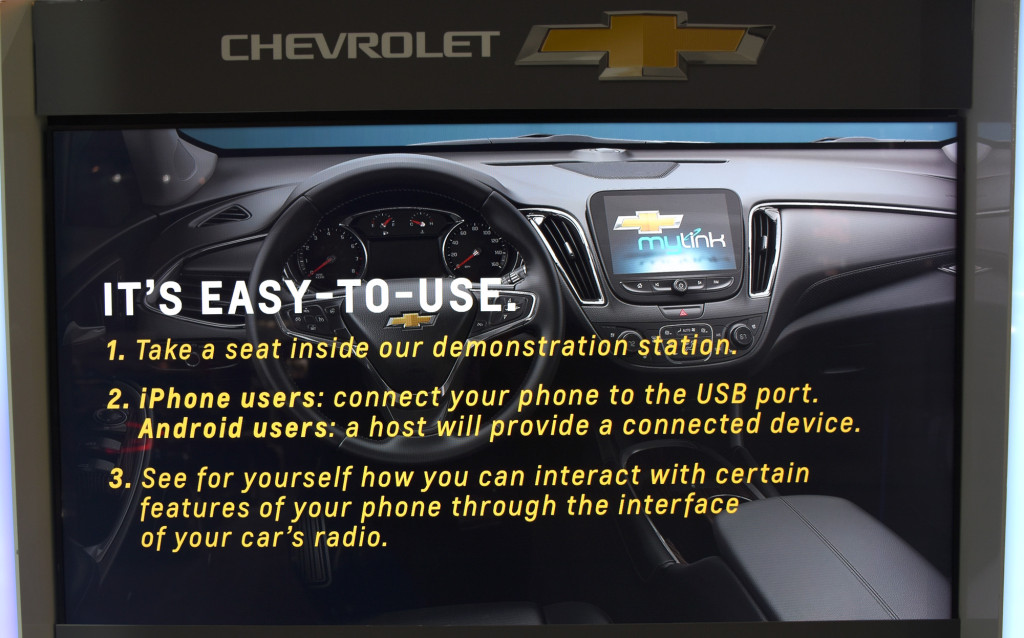
If you’re curious about what the vehicles of today (and tomorrow) can offer for mobile connectivity, and you happen to be in Toronto within the next 10 days, then the Canadian Auto Show has plenty to try out.
Unlike last year, where infotainment took a backseat, some automakers are making a point of showcasing the connectivity their vehicles will offer this year. Much of this is centred on Apple’s CarPlay and Google’s Android Auto, though some new proprietary systems and features are on display as well.
A number of vehicles from various manufacturers will have working CarPlay and Android Auto demos on the show floor. Volkswagen, Hyundai, Honda, Chevrolet, GMC, Ford, Kia, Mercedes-Benz, Porsche and Volvo are some of them.
The Chevy booth has mockups to test out either platform as an alternative to having to step into a car to try it out. The Hyundai booth has an Android Auto station with couches and chargers to familiarize yourself with the interface and features. Volkswagen is advertising its “App-Connect” platform, with a video station promoting some of the features using clips from recent commercials. For a more hands-on take on what either platform can do, you would need to step into one of the various cars in the company’s spacious booth.
Since you are likely to have your phone with you, it’s not a bad idea to also bring your own Lightning or microUSB cable, making it easier to step in, plug in and play around without having to ask a rep to loan you one for the demo. It’s also unlikely that vehicles will already have them set up anyway, putting you in a good position to see what they can do. Playing your music for brief moments to test the car’s audio should be allowed, too.

There will be no demonstrations of wireless CarPlay or Android Auto at the show, and that is likely because Apple and Google won’t allow it. The 2017 model vehicles should be equipped to handle it when that door unlocks, but there will be no way to see how it actually functions during the show.
Ford, GM and BMW are also showing how their in-car LTE Wi-Fi hotspot technology works, though connectivity is a little spotty on the show floor, so demos may not be impressive. GM has had this in select vehicles going back to 2014, and BMW was one of the first automakers to embed a SIM card in its vehicles, though it was always restricted to over-the-air updates and its ConnectedDrive concierge service. Ford is offering in-car Wi-Fi for the first time this year, with pricing plans that are really no different from GM. And like the GM setup, AT&T is the carrier network, working in agreement with the Big 3 here to offer the best connection based on location.
Part of Ford’s booth includes stations to see how Sync 3 and Sync Connect work. The infotainment system had a soft launch in 2015 with the 2016 Escape and Fiesta, but will roll out to everything in Ford’s 2017 model lineup, which incidentally, also includes CarPlay and Android Auto. The 2016 Escape and Fiesta will also get those two platforms later this year as software updates.
The 2017 Honda Civic and 2017 Pilot are another two vehicles showcasing the platforms for attendees, following the 2016 Honda Accord as the first from the company to do so. Acura, however, will not, as there are currently no plans to bring them to those vehicles this year. That may change, but don’t bet on it.
Fiat Chrysler is doing the same with some of its vehicles at the show as part of its fourth-generation Uconnect system. Others, like Toyota, Mazda and Jaguar Land Rover, continue to hold out on implementing them, but each of their respective proprietary systems are there to see, giving attendees a sense of what alternatives are available.
For those looking to go a little more luxurious, there is no shortage of that at the show. One of the standouts, particularly with the mobile technology inside as part of its new iDrive 5.0 system, is the new BMW 7 Series. Equipped with a larger capacitive touchscreen, digital instrument cluster, gesture controls and a Samsung Galaxy Tab 7 onboard in the back that can take over control of the whole infotainment system.
There are four gesture controls in total, three of which are preloaded for volume, accepting a call and rejecting a call. The fourth can be customized to work for navigating home or turning the screen off, for example. The front passenger seat moves fully forward and has a footrest on the back for the backseat passenger who wants to take a load off. The Galaxy tablet is in the centre console in the back, and can work either planted in its holster or removed and portable. It is extra thick to accommodate a larger battery that extends the life per charge.

Just sitting in the back and taking some of this in is worth the time and effort. It’s a beautifully-designed vehicle inside and out, even if the full merits of the infotainment and smartphone integration are still suspect.
Mercedes-Benz has its new E-Class at the show, which includes the revamped all-digital dashboard and the dual 12.3-inch LCD screens with a Qi wireless charging pad. Well worth a look if you want to see how your phone might work with that system.
There is Qi wireless charging onboard, too, but no CarPlay or Android Auto as of yet, though the car could support them eventually. Indeed, wireless charging is another feature that will be more widely available. Not every trim will include it, so best to ask a rep which vehicle has it, in case you have a device that supports it.
In the Auto Exotica section, where the highest-end vehicles, Lamborghini, Maserati, Ferrari, Rolls Royce, Bentley — that level of luxury is downstairs from the main floor. It is not so easy to get into any of those vehicles, but Tesla is an exception. The Model X SUV is on hand, and you can go and see everything about it, including the DeLorean-style rear doors and 17-inch display on the dash.
The Model X doesn’t come cheap. It is a $100,000 ride, but it’s an interesting one to check out, particularly in how it is more of a connected device than other combustion vehicles tend to be. Electric vehicles are common on the show floor, with the Chevy Bolt EV being one of the most prominent. Each EV has a different dashboard setup and added smartphone and smartwatch integration that isn’t always as deep with the regular models.
This is all a mere snapshot of what’s on hand at the Canadian Auto Show in Toronto from Feb. 12-21. There’s plenty of connectivity and integration to check out throughout, including with supporting vendors outside of the main halls.


